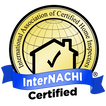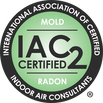Mike's Home Inspector BlogMichael Burfitt |
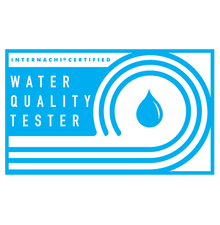 As someone who was born and raised in the suburbs and now lives in a typical suburban home in Halifax with my family, I imagined most of my clients would be in the Halifax and Dartmouth areas when I launched my business, so I had no plans to do water testing. These areas are serviced by Halifax Water via the Pockwock and Lake Major water treatment plants respectively. In short, our water is clean, safe and if for some reason conditions change, we will be instantly alerted. It eventually became apparent that I was serving many clients in rural areas: I would estimate that over half the inspections I have done so far in 2023 are in what would commonly be considered rural areas. Upon adding water testing services earlier this year, it quickly became my most requested add-on service. Why Water Testing Matters I remember at the age of 9 moving to Dartmouth close to the water treatment plant on Lake Major and instantly noticing how the water tasted like swimming pool water! There was no question that chlorine was added to the water supply and as unpleasant as it was at least it wasn’t going to make one sick in that quantity. Unfortunately, many contaminants aren’t easily identifiable by the senses like that. We all know that water is commonly known by its chemical composition (H2O) as a molecule of water is made up of 2 Hydrogen atoms and 1 Oxygen atom. In theory that’s correct but water is almost never seen in its purest form. Here are a few chemicals frequently tested for in a water test and why. Arsenic (As) Arsenic is a naturally occurring element and prolonged exposure to As can lead to skin problems, cardiovascular disease and some cancers. Lead (Pb) While found in bedrock, Pb is rarely found in groundwater. The main concern is with Pb supply lines, which are concentrated mainly in Peninsular Halifax and the older section of Dartmouth. Lead can cause significant neurological issues, especially in children as well as many health problems in adults. Nitrates (NO3) and Nitrites (NO2) Both compounds are similar, with the difference being the number of oxygen atoms. Both commonly come from fertilizers and animal waste and can lead to health issues, most noticeably methemoglobinemia (commonly referred to as blue baby syndrome), caused by low oxygen in the blood. Fluoride (F–)
Commonly known as that stuff in toothpaste, fluoride is related to, but not the same as the highly reactive element fluorine (F). F– is an ion (meaning it is electrically charged: in this case negative). While beneficial in very small amounts, excessive F– can lead to dental and bone problems known as fluorosis and large F- levels can lead to brain damage and even death. Luckily this is not really an issue with Nova Scotia groundwater but this fancy graph above highlights some of the many effects of F- Contact us at Inside Edge for more information on the variety of water testing options we can provide for you. We’ll properly take samples and provide a report while interpreting the laboratory results in an easy-to-understand format. There are few things I prioritize over quality home inspections and my family is at the top of that list. Like all parents I always try to keep my child safe and healthy but, like being a great home inspector, there are always lessons to be learned and improvements to be made.
A few years ago my son was born, and I officially became a parent. I remember on the drive home from the hospital thinking about how it was crazy that possibly the two biggest life changers most people face (moving into a new house and bringing home a newborn) both have no technical manuals and while I knew I would be a great parent, I had the all-too-common feeling of not even knowing where to start. But enough about my personal ramblings: this article is about providing a safe and healthy environment for our little ones. I have learned a lot, both through my home inspector training and general life experience about having a safe and healthy home. New parents already know about baby gates, outlet covers, etc. so I’m going to look at less obvious ways to keep kids healthy and happy. Houses (and Children) Need to Breathe! I just finished writing a post about mechanical ventilation before this. The obvious retort that I didn’t address in that post was “is ventilation REALLY that important? I grew up in an airtight home and did fine!” Most of the kids in my neighbourhood in my early 80s constructed subdivision were fine in terms of surviving but health problems such as asthma and ear infections were rampant. While I am no medical professional, I now realize the most likely reason for this was simple: the air was stale and contaminants floated in the air, especially cigarette smoke. Yes, for you younger readers, back in the 80s people smoked EVERYWHERE except in schools and the concern for homebuilders was keeping heat in, not getting pollutants out. Lead is Still an Issue Today I remember as an 80s kid pulling up to the gas station and hearing my parents ask for “regular unleaded”. Lead was slowly removed in the 1980 and by the time the 90s arrived the gas station no longer had leaded gasoline. So, it’s great that lead is no longer used, and we don't need to worry, right? WRONG! Fact is, lead is still used to this day although usually either in very small quantities or safely sealed, such as in lead-acid batteries. Lead poisoning has been linked to a number of significant neurological issues and it affects children much more than adults. What's worse is that lead has a sweet texture, which can be attractive to exploring babies and toddlers. There is certainly no need to panic about lead, just to be aware. Some common areas that lead is found are: Water Pipes In the Halifax area, they are ONLY found in Peninsular Halifax, Dartmouth inside Highway 111 and near Chocolate Lake and even within these areas, only a small fraction of homes use lead rather than copper supply lines. Any home inspector or plumber can usually quickly tell you if you have lead pipes and point you to the next steps to safely remove them. Keep in mind that lead solder was used until 1986 and lead was permitted in plumbing fixtures (in small quantities) until 2014! Paint This varies: before 1950 paint had a large amount of lead, by 1980 lead levels were greatly reduced, by 1992 paint is virtually lead free. While on the wall it isn’t too hazardous (almost all pre-90s houses have had leaded paint covered over by another lead-free layer), stripping or disturbing lead paint can spread toxic lead dust throughout a home. Mini-Blinds. While they were voluntary recalled in 1996, some of these window coverings may still be around. Even if kept out of reach of children, the Sun’s UV rays slowly degrade the blinds and releases lead dust into the air. These should be removed and replaced immediately if discovered. Carbon Monoxide (CO) is a Silent Killer Any home that uses a heat source other than electricity and/or has an attached garage has carbon monoxide as a result of the combustion process. Usually, it is safely vented outside but no system is perfect. I have heard some people claim it’s not big deal since you can smell it and this is wrong. CO, like Propane and Natural Gas is 100% odourless, colourless and flavourless. The difference is that companies add Methanethiol, commonly known as Rotten Egg smell that is easily detected by humans, while CO obviously has no additives and cannot be detected by any human senses. Children are especially vulnerable to CO poisoning, especially after bedtime and sadly far too many adults and children pass away in their sleep due to CO. Therefore, it is imperative to not only have working CO detectors but to regularly inspect and replace if necessary. These are just a few of many examples that new parents, often already overwhelmed, simply don’t consider when childproofing their home for the first time. Did you know that your home has at minimum, not one but two plumbing systems that need to be kept completely separate? They are:
Most homes in the Halifax core are connected to Halifax Water and one of its 2 large (Pockwock & Lake Major) supply plants. It is supplied to homes in various pipes with the biggest concern being lead pipes. If your home was built before 1960 and is located on the Halifax peninsula or Dartmouth inside Highway 111 there is a chance you have lead pipes and should have them inspected. Other concerns for the home inspector are homes that use the following types of supply pipe: Galvanized Steel The main issue with this type of supply pipe is its age. As it has not been widely manufactured for over 60 years, the 40-to-50-year life expectancy has long since passed. The other main problem with this type of plumbing is that they will rust from the inside out, leading to low pressure, rusty water, and ruptured pipes. These pipes should be replaced as soon as possible. Polybutylene (PB) and/or Kitec (PEX-AL-PEX) There have been large class action lawsuits field against the manufacturers of both products alleging that they have an unacceptably high failure rate. While the internet is full of horror stories in my experience there have been very few problems with both types of pipe here in Canada and are usually the result of poor fittings. The main concerns are that if these pipes fail, they tend to catastrophically burst rather than leak and that some insurance companies refuse to insure homes with these types of pipes without some form of mitigation, up to complete replacement. I touched upon Kitec in a previous article and this type of piping is usually used in heating systems with PB a popular choice for water supply in the 1990s. With all that out of the way, what is a good type of pipe to use? Generally, two main types are used today: Copper (usually Type L) and Plastic (usually PEX or Cross-Linked Polyethylene). There are pros and cons to all these types of piping and a qualified contractor can advise on the best option for your home. It is very important that supply piping be kept separate from DWV piping as this can lead to serious, even fatal cross contamination. The biggest issue I see is homeowners leaving garden hoses connected when not in use: this can lead to outside water being drawn into the potable water supply and they should be disconnected when not in use. |
Archives
July 2024
Categories
All
|
|
Inside Edge Home Inspections Ltd.
Halifax, NS 902-209-9921 [email protected] Proudly Serving the HRM & Central Nova Scotia |
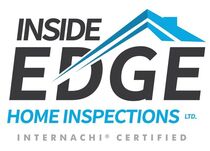
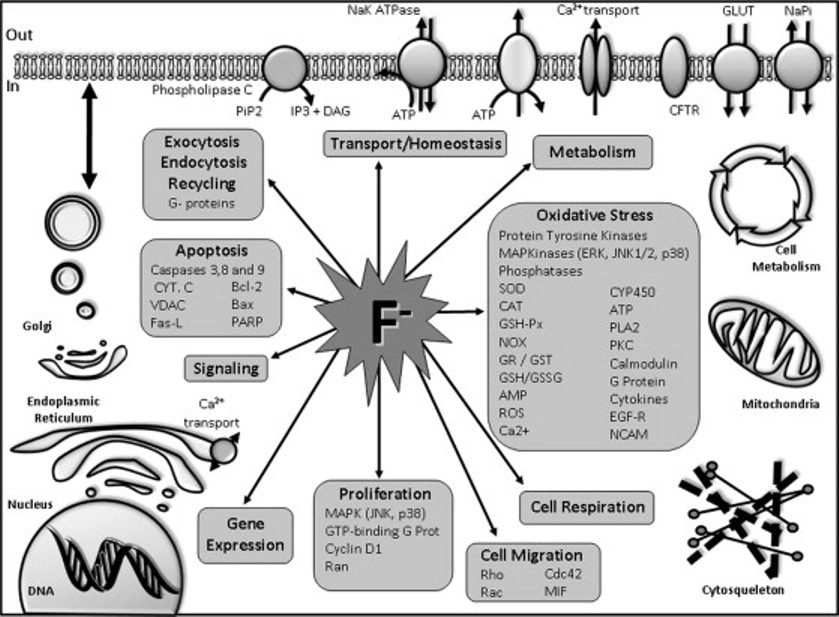

 RSS Feed
RSS Feed
